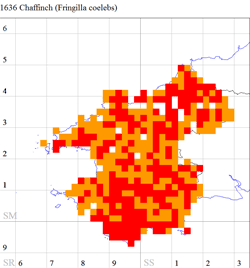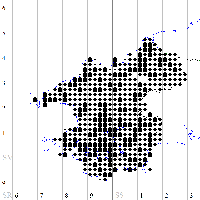Chaffinch - 1894
 Sunday, April 26, 2020 at 12:25PM
Sunday, April 26, 2020 at 12:25PM Fringilla coelebs
A common resident, by far the most numerous, after the Common Linnet, of the whole finch tribe in the county.
Mr. Dix thought it " by far the most numerous of the Conirostres, exceeding in numbers all the others combined." He adds that he had never noticed any separation of the sexes, or addition to its numbers during the winter. He thought the Chaffinch the only small bird that, in his district, was as numerously represented as it is in the south and east of England. We do not agree with him in this opinion. The Common Linnet and the Yellow Hammer, not to mention several other small birds, are quite as abundant in Pembrokeshire as we ever met them in the English counties we were familiar with.
At Stone Hall our Chaffinches were remarkably tame, very often coming into the house to pay us visits, and they would build their nests as close to us as they could in the creepers trained around our windows. One pair that did so came in daily at the dining-room window to feed on any seeds that fell on the floor from our various cages, and finding the eggs in the nest to be unusually large and brightly coloured, the effect, we considered, of the hen bird's good feeding, we appropriated one or two of them for our collection.
"During the severe winter in January, 1867," writes Mr. Dix, " several Chaffinches were frozen to death. On the night of the 14th the thermometer fell to five degrees below zero; the next morning four of these birds were brought to me quite dead and stiff, — all of them had their heads under their wings as though they died asleep, — doubtless starvation had something to do with it, but I am persuaded the cold killed them. The 30th October following, I saw the largest flock I ever noticed. There must have been five or six hundred birds; they were in a small field close to the mountains; I watched them for some time without seeing a single bird of any other species."
 Pembrokeshire Avifauna committee | Comments Off |
Pembrokeshire Avifauna committee | Comments Off | 







